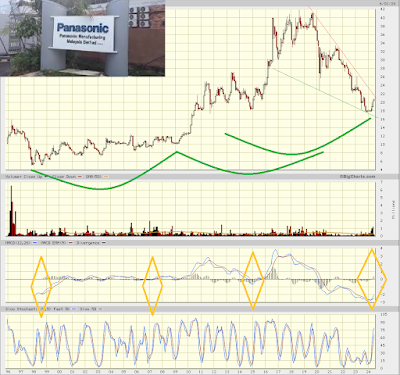After nearly 3 decades in stocks, what are the most important factors to increase stock-picking accuracy?
A tough question to answer for sure, but a key word is probability. The probability that the owners inclined to sell are largely done selling at the lowered price. The probability that the price has fallen sufficiently far & fast to attract bargain-hunters sufficient to push up the price in the medium term. The probability that earnings have stabilised after a period of downdraft and are ready to rise. The probability that the macroeconomic situations that impact the stock most deeply will not worsen or even ameliorate. The probability that sufficient funds owned by technical-analysis-inclined managers will buy into the stock in a significant way and so on. And most of these play off against or with each other to produce the stock elevation or recession that eventually manifests in real time & thus furnish the profits(or not) in my own earnings statement!
However, many of these probabilities are unquantifiable: how do we go into the minds of big shareholders to know if they have no more inclination to sell? Or into the minds of owners or prospective owners who have eyed an increase in or initiation of their stakes and are finally ready to pounce. How to assess the various factors like exchange rates & input & output prices & industry demand in their confluencing into sales & earnings? What method is available to assess the impact of sudden outbreaks of wars and/or changes in taxation and tariffs on future earnings? Is there a guarantee that what is a comfortable cash pile now will not be whittled down by management misadventures in future, as illustrated by MAA from 2019 till 2024?
Technical analysis has helped me over the decades to cut out the necessity of over-reliance on balance sheet, earnings & cashflow figures to improve my score %. Yet less than 20% of my total wins have come from stocks bought close in time or price to their eventual bottoms and after many pricey lessons, I have come to see, for now, that fundamentals are 65%-70% dominant in price performance while technicals hold a 20-30% weight, with the two not adding up to 100% since unknowables & black swan events(with the most recent example being Covid) have a small but non-zero likelihood.
If I were to be forced to choose the single most effective technical buy signal, it would be the double bottom or quasi-double bottom, with the reliability in direct proportion to the length of time between the bottoms. Case in point is YTL Corp, which bottomed out at just under 50 sen in late 2002, rose jaggedly to a peak of M$2.11 in 2012, then meandered down to the exact nadir of 20 years prior when the Russia-UKR war broke out in Apr '22 & now trades at nearly SEVEN-FOLD, handily crushing its old record high even excluding dividends:














